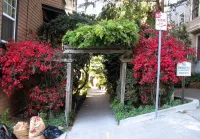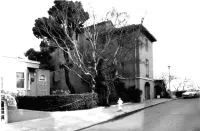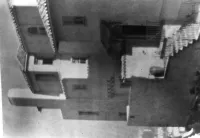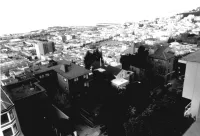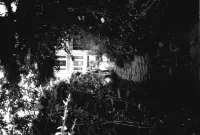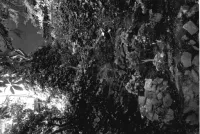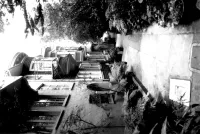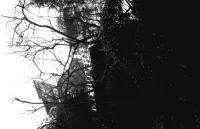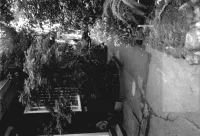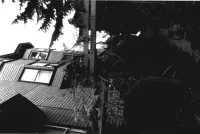Share what you know,
and discover more.
Share what you know,
and discover more.
Sep 03, 2012
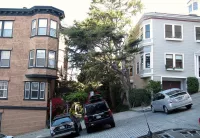
-

- Charmaine Bantugan
Russian Hill–Macondray Lane District
The Russian Hill–Macondray Lane District is a 1.6-acre (0.65 ha) historic district in San Francisco, California that was listed on the National Register of Historic Places in 1988. The listing included 12 contributing buildings and one contributing site, Macondray Lane.
Russian Hill–Macondray Lane District
The Russian Hill–Macondray Lane District is a 1.6-acre (0.65 ha) historic district in San Francisco, California that was listed on the National Register of Historic Places in 1988. The listing included 12 contributing buildings and one contributing site, Macondray Lane.
Sep 03, 2012
Russian Hill–Macondray Lane District
The Russian Hill–Macondray Lane District is a 1.6-acre (0.65 ha) historic district in San Francisco, California that was listed on the National Register of Historic Places in 1988. The listing included 12 contributing buildings and one contributing site, Macondray Lane.Posted Date
Sep 20, 2022
Historical Record Date
Sep 03, 2012
Source Name
Wikipedia
Delete Story
Are you sure you want to delete this story?
Jan 07, 1988
Jan 07, 1988
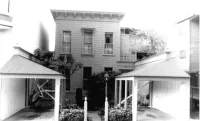
-

- Charmaine Bantugan
National Register of Historic Places - Russian Hill–Macondray Lane District
Statement of Significance: The Russian Hill/Macondray Lane District appears eligible for the National Register of Historic Places under criterion C, architecture, as a picturesque, woodsy, village-like enclave of vernacular and nearly vernacular architecture amid lush landscape on a view-rich hillside, an enclave with a history of artistic/Bohemian and Italian American inhabitants. The period of significance begins in 1878 with construction of Sketch Map No. 7 (the steep hillside had prevented earlier development) and continues through the 1906 earthquake and fire which wiped out all but No. 2, 7, 12 & 19, a very high number of survivors in relation to the general devastation, Most of the other houses were built within the next three years, one in the 1920s, and the period of significance concludes with major enlargement of the last contributing building, No. 16, in 1930. Macondray Lane itself sets the district's woodsy tone; it enfolds the houses in greenery and creates an atmosphere in the Craftsman ethic, attractive to artists and Bohemians. Such residents have included landscape painter Giuseppe Cadenasso, poet and librarian Ina Coolbrith, writer Charles Caldwell Dobie, humanitarian Anita Whitney, 1 Meteorologist A. G. McAdie, Editors W. H. B. Fowler and Eleanor Ross, Printer Charles S. Ross, Geologist Curtis Redfern, Glass Workers Charles Bovone and Edward Rowland, Theater Musician Batista Devincenzi, and Architect Edward Huber Jr. The district boundaries were chosen to focus on this entire block of Macondray Lane (its only other block, to the West, is also woodsy but full of unremarkable backyards and building rears), the historic buildings along it, the adjoining properties on the North side of Green in a continuation of the woodsy enclave, and one cottage at Jones and Union Streets which adjoins the property at Jones and Macondray and is associated with it both historically and architecturally. This district is a woodsy, village-like enclave, which is a different world, visually distinct from the streetscapes on three sides, all solidly filled with yard less post-1906 small frame apartment buildings. The Northeast portion of the district housed and was shaped by some successful Italian Americans. Around the turn of the century this area was the farthest penetration of the local Italian community onto Russian Hill. Gumina says that immigrants from the Genoa area concentrated at this edge of North Beach; certainly, Cadenasso at No. 12 and Bovone at No. 15 are known to have come from there. The Italians this far up the hill were prosperous, significant members of the community. Louis or Luigi DeMartini of No. 19 (b. Nov. 1854), the Confectioners' Supplier, had come to America as an infant in 1856, long before the major Italian immigration of the 1880s; A. P. Giannini sought his counsel in founding the Bank of Italy (now Bank of America) and convinced him to become an early investor in it; his big house designed by Mooser & Son symbolized his prosperity; his family lived in the house some 70 years. 3 Giuseppe Cadenasso of No. 12 (1858-1918) had come to California at age nine in 1867; he rose from waiter at artists' hangout Coppa's Restacirant to be one of the area's most sensitive landscape painters and head of the Mills College art department. 4 Charles Bovone of No. 15 (c.l865-c.!938) had come with the great migration.
National Register of Historic Places - Russian Hill–Macondray Lane District
Statement of Significance: The Russian Hill/Macondray Lane District appears eligible for the National Register of Historic Places under criterion C, architecture, as a picturesque, woodsy, village-like enclave of vernacular and nearly vernacular architecture amid lush landscape on a view-rich hillside, an enclave with a history of artistic/Bohemian and Italian American inhabitants. The period of significance begins in 1878 with construction of Sketch Map No. 7 (the steep hillside had prevented earlier development) and continues through the 1906 earthquake and fire which wiped out all but No. 2, 7, 12 & 19, a very high number of survivors in relation to the general devastation, Most of the other houses were built within the next three years, one in the 1920s, and the period of significance concludes with major enlargement of the last contributing building, No. 16, in 1930. Macondray Lane itself sets the district's woodsy tone; it enfolds the houses in greenery and creates an atmosphere in the Craftsman ethic, attractive to artists and Bohemians. Such residents have included landscape painter Giuseppe Cadenasso, poet and librarian Ina Coolbrith, writer Charles Caldwell Dobie, humanitarian Anita Whitney, 1 Meteorologist A. G. McAdie, Editors W. H. B. Fowler and Eleanor Ross, Printer Charles S. Ross, Geologist Curtis Redfern, Glass Workers Charles Bovone and Edward Rowland, Theater Musician Batista Devincenzi, and Architect Edward Huber Jr. The district boundaries were chosen to focus on this entire block of Macondray Lane (its only other block, to the West, is also woodsy but full of unremarkable backyards and building rears), the historic buildings along it, the adjoining properties on the North side of Green in a continuation of the woodsy enclave, and one cottage at Jones and Union Streets which adjoins the property at Jones and Macondray and is associated with it both historically and architecturally. This district is a woodsy, village-like enclave, which is a different world, visually distinct from the streetscapes on three sides, all solidly filled with yard less post-1906 small frame apartment buildings. The Northeast portion of the district housed and was shaped by some successful Italian Americans. Around the turn of the century this area was the farthest penetration of the local Italian community onto Russian Hill. Gumina says that immigrants from the Genoa area concentrated at this edge of North Beach; certainly, Cadenasso at No. 12 and Bovone at No. 15 are known to have come from there. The Italians this far up the hill were prosperous, significant members of the community. Louis or Luigi DeMartini of No. 19 (b. Nov. 1854), the Confectioners' Supplier, had come to America as an infant in 1856, long before the major Italian immigration of the 1880s; A. P. Giannini sought his counsel in founding the Bank of Italy (now Bank of America) and convinced him to become an early investor in it; his big house designed by Mooser & Son symbolized his prosperity; his family lived in the house some 70 years. 3 Giuseppe Cadenasso of No. 12 (1858-1918) had come to California at age nine in 1867; he rose from waiter at artists' hangout Coppa's Restacirant to be one of the area's most sensitive landscape painters and head of the Mills College art department. 4 Charles Bovone of No. 15 (c.l865-c.!938) had come with the great migration.
National Register of Historic Places - Russian Hill–Macondray Lane District
Statement of Significance:The Russian Hill/Macondray Lane District appears eligible for the National Register of Historic Places under criterion C, architecture, as a picturesque, woodsy, village-like enclave of vernacular and nearly vernacular architecture amid lush landscape on a view-rich hillside, an enclave with a history of artistic/Bohemian and Italian American inhabitants. The period of significance begins in 1878 with construction of Sketch Map No. 7 (the steep hillside had prevented earlier development) and continues through the 1906 earthquake and fire which wiped out all but No. 2, 7, 12 & 19, a very high number of survivors in relation to the general devastation, Most of the other houses were built within the next three years, one in the 1920s, and the period of significance concludes with major enlargement of the last contributing building, No. 16, in 1930. Macondray Lane itself sets the district's woodsy tone; it enfolds the houses in greenery and creates an atmosphere in the Craftsman ethic, attractive to artists and Bohemians. Such residents have included landscape painter Giuseppe Cadenasso, poet and librarian Ina Coolbrith, writer Charles Caldwell Dobie, humanitarian Anita Whitney, 1 Meteorologist A. G. McAdie, Editors W. H. B. Fowler and Eleanor Ross, Printer Charles S. Ross, Geologist Curtis Redfern, Glass Workers Charles Bovone and Edward Rowland, Theater Musician Batista Devincenzi, and Architect Edward Huber Jr. The district boundaries were chosen to focus on this entire block of Macondray Lane (its only other block, to the West, is also woodsy but full of unremarkable backyards and building rears), the historic buildings along it, the adjoining properties on the North side of Green in a continuation of the woodsy enclave, and one cottage at Jones and Union Streets which adjoins the property at Jones and Macondray and is associated with it both historically and architecturally. This district is a woodsy, village-like enclave, which is a different world, visually distinct from the streetscapes on three sides, all solidly filled with yard less post-1906 small frame apartment buildings.
The Northeast portion of the district housed and was shaped by some successful Italian Americans. Around the turn of the century this area was the farthest penetration of the local Italian community onto Russian Hill. Gumina says that immigrants from the Genoa area concentrated at this edge of North Beach; certainly, Cadenasso at No. 12 and Bovone at No. 15 are known to have come from there. The Italians this far up the hill were prosperous, significant members of the community. Louis or Luigi DeMartini of No. 19 (b. Nov. 1854), the Confectioners' Supplier, had come to America as an infant in 1856, long before the major Italian immigration of the 1880s; A. P. Giannini sought his counsel in founding the Bank of Italy (now Bank of America) and convinced him to become an early investor in it; his big house designed by Mooser & Son symbolized his prosperity; his family lived in the house some 70 years. 3 Giuseppe Cadenasso of No. 12 (1858-1918) had come to California at age nine in 1867; he rose from waiter at artists' hangout Coppa's Restacirant to be one of the area's most sensitive landscape painters and head of the Mills College art department. 4 Charles Bovone of No. 15 (c.l865-c.!938) had come with the great migration.
Posted Date
Sep 20, 2022
Historical Record Date
Jan 07, 1988
Source Name
National Register of Historic Places
Source Website
Delete Story
Are you sure you want to delete this story?


